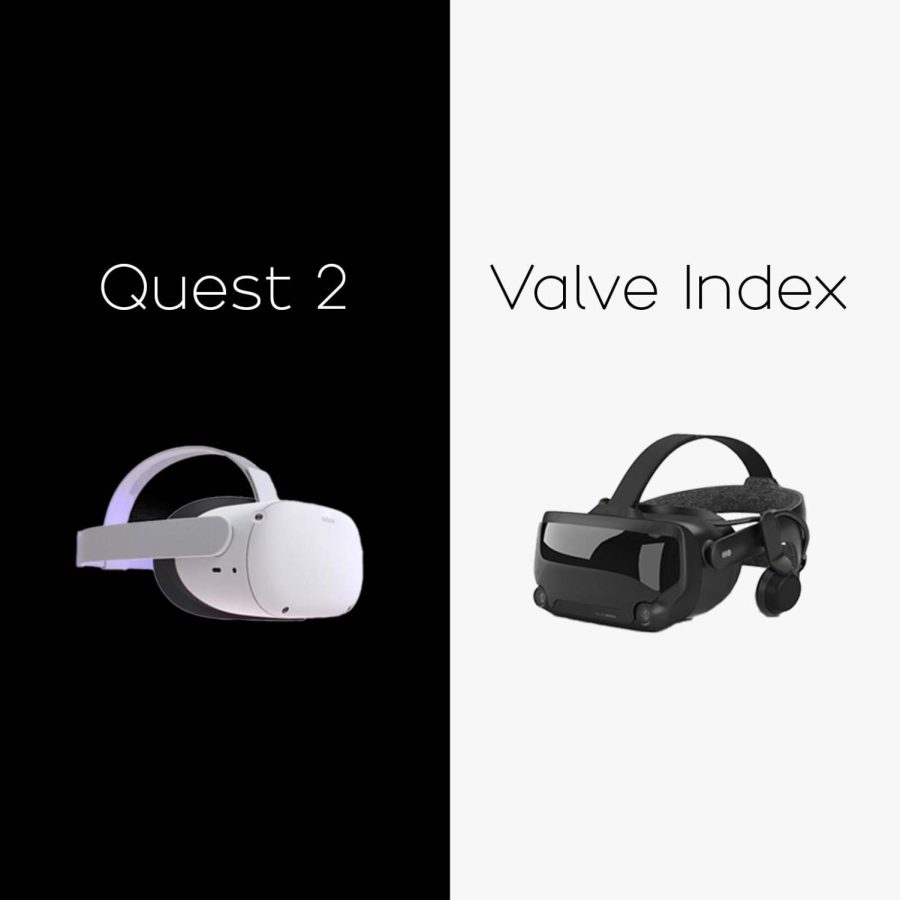Quest 2 vs Valve Index: Which to Buy?
February 17, 2022
Virtual Reality has been a part of gaming for the past several years now, and interest in it keeps growing by the day. Now it is expanding past gaming to include all entertainment in general, especially with more options for VR headsets. At the forefront of this industry is the Oculus Quest 2 (now known as Meta Quest 2) and the Valve Index. Both of these headsets approach VR in very different ways. The question is, though — who comes out on top?
Let’s begin with the Valve Index. It is widely known as the “top-of-the-line” VR headset, with a price to match. The Valve Index begins at $999. That price alone is one of the biggest downsides to the headset. It’s hard for people to justify spending that much money to try out new technology. However, that price does seem more worth it after some time using it. The Index’s hardware is very impressive, supporting a high-end display, a wide field of view, accurate motion tracking, and fantastic controllers that include hand-tracking, allowing you to use each of your fingers in VR.
The Valve Index is the only headset currently on the market to include a 144-hertz display, which may help some users avoid motion sickness. It also has great headphones that hover just over your ear and provide fantastic sound.
Now let’s move on to the Quest 2. This headset begins at $299, which is $700 cheaper than the Index. The largest difference between these headsets are ease of use and accessibility. The Quest 2 has no cables or wires to speak of, excluding those used to charge the headset and controllers. They also lack the need for any “base-station” to track the wearer’s movements, or a desktop computer to run the games, both of which the Index relies on. It is a much better introductory VR headset, especially to those less familiar with the concept of VR, or to those who wish to avoid working too much with computers. I must say, getting the Quest 2 up and running to play games took very little effort, besides fiddling with Facebook’s integration with the headset.
The Facebook integration is a big downside. The Quest 2 requires all users to link their Quest 2 to their Facebook account. To some stark anti-Facebook consumers like myself, this is not an attractive part of the headset. Facebook suffered a PR disaster in October 2021, and had its reputation tarnished to many people. And now, with their movement as a company, their investment in the “Metaverse” is easy to question or criticize.
I have played with the Oculus Quest 2, as my father received it as a gift. I tried a few of the free games and experiences available, and it worked quite well. To me, it still falls quite short of the Index, but that is what you get for a cheaper headset.
To wrap things up, I thoroughly enjoy using the Valve Index. It feels great, the controllers are fantastic, and it offers a great experience for anyone new and familiar with VR. However, it is $1000. The humble Oculus also offers a decent experience at a much more accessible price, and will work just fine to someone who just wants to try VR out. What it came down to me was the fact that the Quest came from Facebook. If it was any other manufacturer, I may have opted to save up for the Quest instead. So, if you don’t care about Facebook, or even like the company, the Quest 2 is a decent headset for a decent price. If you care about Facebook and would like to avoid it, I would recommend the Index. There are also a few mid-range headsets available, but I have not tried them out, and can’t testify to their quality.




